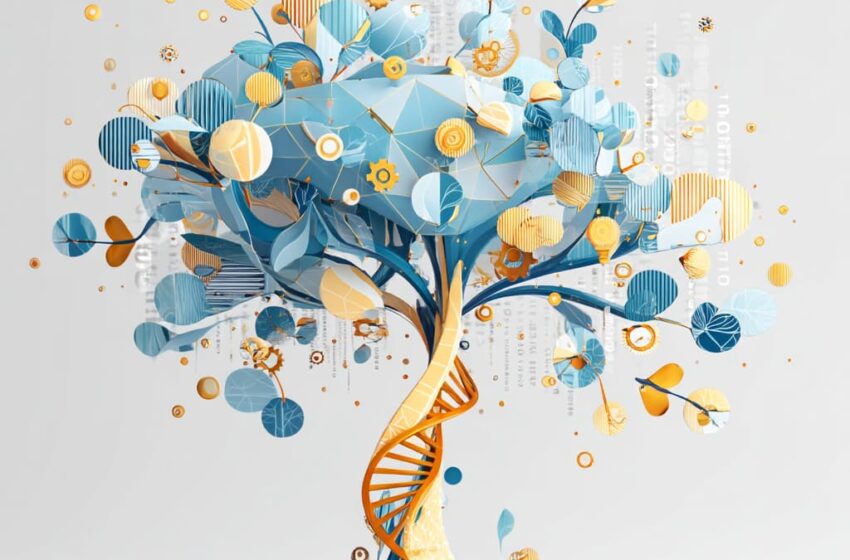
Genetic Testing in Genealogy: Exploring the Promise and the Boundaries
Modern genealogy has undergone a quiet revolution. Once rooted solely in handwritten records and family lore, it now embraces advanced technologies—none more transformative than DNA testing. Through genetic analysis, individuals are uncovering lost family connections, exploring ancestral origins, and enriching traditional family trees with scientific insight. But as with any innovation, it’s important to recognize both the benefits and the boundaries of this powerful tool.
This article examines how DNA testing supports genealogical discovery, where it excels, and where caution is necessary.
Understanding DNA’s Role in Genealogy
At its foundation, genealogical DNA testing involves comparing a person’s genetic code with databases of other test-takers. Shared segments of DNA suggest biological relationships and, in some cases, common ancestry. These connections can validate research, open up new branches in a family tree, or help confirm suspected relationships.
Unlike historical records, which can be lost or distorted over time, genetic material is an immutable record passed through generations. Yet interpreting it requires both scientific understanding and contextual evidence, particularly when exploring complex or distant family connections.
Types of Genetic Testing for Family Research
DNA testing offers a few pathways depending on the lineage in question. Autosomal DNA, used most commonly, analyzes markers from both sides of a person’s family and is useful in identifying relatives within approximately six to eight generations. It’s the go-to choice for people seeking to build broader family networks or confirm cousin-level relationships.
Other forms of testing provide more targeted insights. Y-DNA, passed from father to son, allows for tracing paternal lines. It’s especially helpful when researching surnames or paternal origins in male family members. In contrast, mitochondrial DNA, inherited from mothers by both sons and daughters, can illuminate maternal ancestry, sometimes across many generations.
While each testing method has unique advantages, none on its own provides a full picture. Combining them, where appropriate, enhances the accuracy and depth of genealogical research.
What DNA Testing Can Reveal
When incorporated thoughtfully, genetic testing brings significant value to ancestry studies. One of its most compelling applications is in confirming suspected family links. Whether verifying a particular branch of a tree or settling questions about lineage, DNA adds a layer of validation that written records cannot always offer.
It also provides pathways for people who have limited or missing documentation—such as adoptees or individuals separated from biological families due to migration, war, or social disruption. By identifying shared segments with others, testers may uncover relatives previously unknown to them.
Another frequently sought result is the breakdown of regional or ethnic ancestry. While these estimates vary in precision, they often offer insights into migration patterns, heritage, and ancestral diversity.
The Limits of What DNA Can Do
Despite its strengths, DNA testing is far from a complete solution. Its insights are probabilistic, not absolute. Many test-takers discover that while they match with relatives, the exact connection can be unclear without supporting documents. For example, a shared DNA segment may indicate a common ancestor, but not which one in a lineage of siblings or cousins.
Furthermore, autosomal DNA becomes less informative as the ancestral distance grows. Beyond a certain point, shared genetic material becomes too diluted to yield reliable matches. This makes tracing lines deeper than a few centuries difficult without historical context.
Ethnicity estimates, while popular, should also be viewed with skepticism. They are based on comparisons to reference populations, which can change as databases expand and methods are refined. A person may receive different ethnicity reports from different companies—or even see results change over time as models are updated.
Privacy, Ethics, and Emotional Impact
Submitting a DNA sample is not without personal consequences. Genetic data is sensitive, and concerns around privacy and consent are legitimate. Although most companies offer options to control data sharing, users should be aware that even anonymized data can be accessed by law enforcement or researchers under certain circumstances.
Beyond legal and ethical concerns, there are emotional dimensions as well. It’s not uncommon for individuals to uncover unexpected relationships—such as previously unknown siblings or revelations of misattributed parentage. These discoveries can bring clarity but may also lead to discomfort or family conflict.
Approaching DNA testing with informed consent and emotional preparedness is essential.
Complementing Traditional Genealogy
DNA testing is most effective when used as part of a broader research toolkit. Rather than replacing written records or oral histories, genetic evidence should enhance and support existing genealogical efforts. A well-built family tree still relies on documentation—birth certificates, immigration papers, census records, and more.
When used together, genetic and documentary evidence reinforce one another, creating a more resilient and nuanced narrative of a family’s past.
Responsible Testing and Interpretation
To maximize the benefits of DNA in genealogy, it’s important to maintain realistic expectations and proceed thoughtfully. Before taking a test, define clear goals—whether seeking biological family members, exploring regional heritage, or confirming a specific lineage. Choose the testing company that best aligns with those objectives and read their policies on privacy and data usage carefully.
Interpreting results may also require assistance. Genetic relationships, particularly those involving complex or endogamous communities, can be difficult to untangle. Collaborating with experienced genealogists or using online forums dedicated to genetic genealogy can offer valuable clarity and guidance.
Conclusion: A Powerful Tool, Best Used Thoughtfully
DNA testing has reshaped the way people engage with their ancestry. It opens windows into stories once thought closed, bridges gaps in family knowledge, and invites individuals into a shared network of biological connections. But it is not a magic key—it is one tool among many in the ongoing process of understanding where we come from.
When approached with care, curiosity, and respect, genetic testing can enhance genealogical work in meaningful ways. Yet its findings are most valuable when grounded in historical records, cultural context, and a deep appreciation for the complexity of family.


